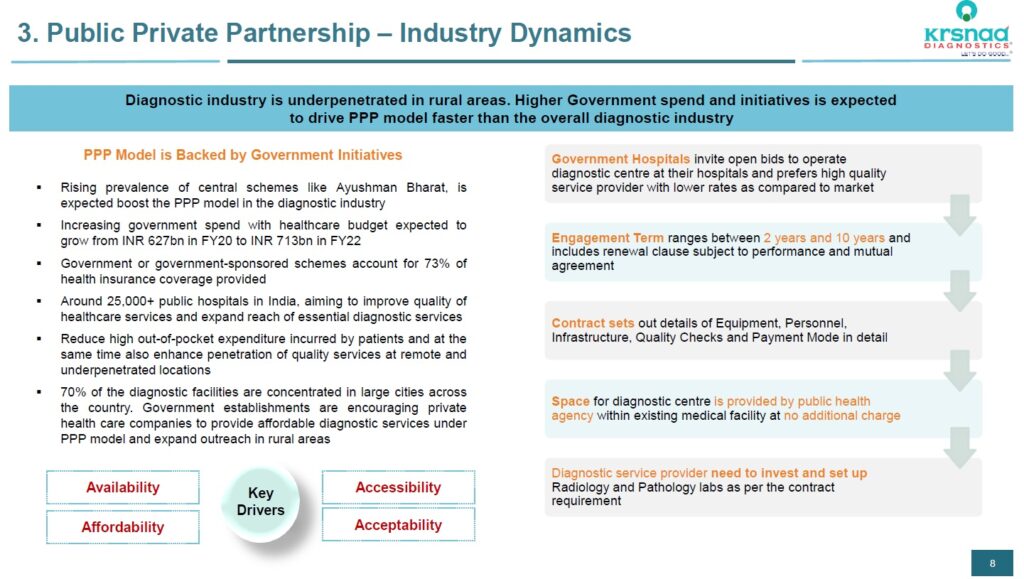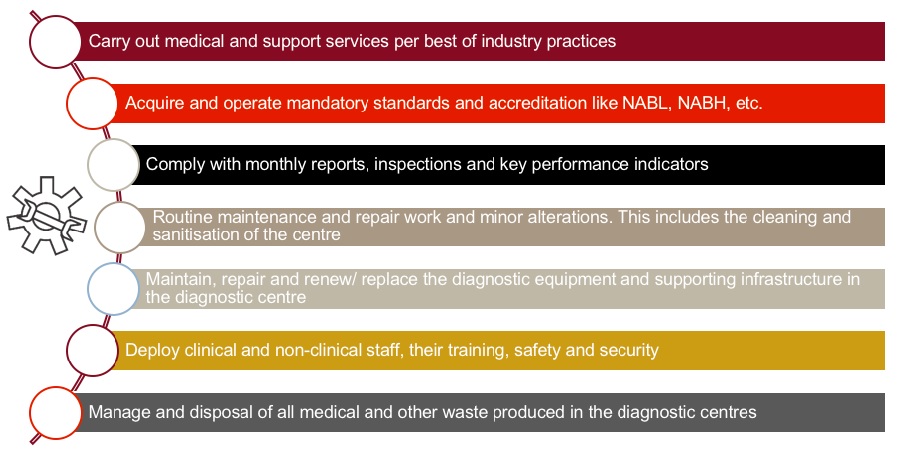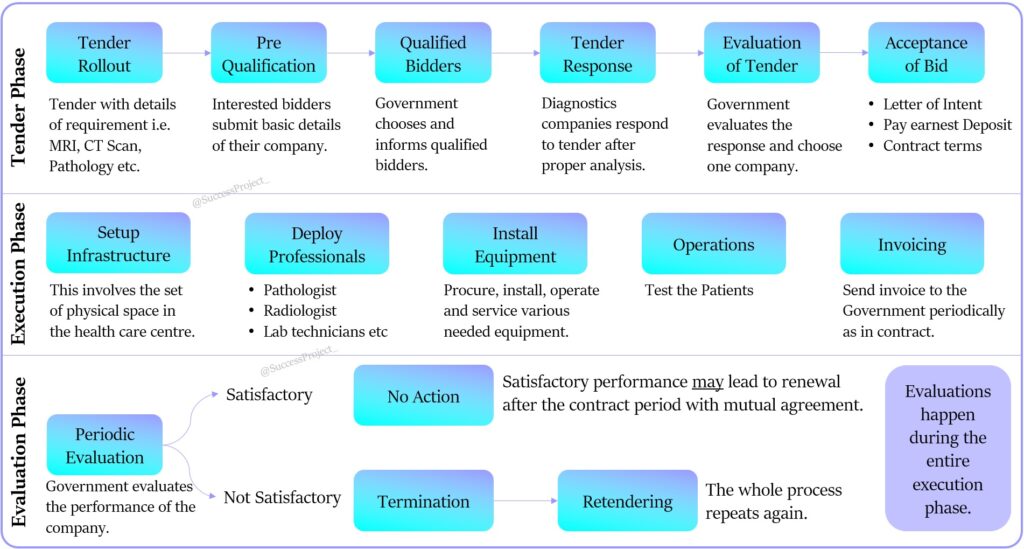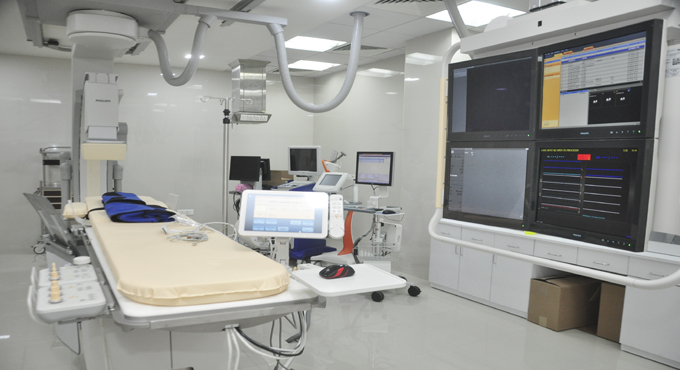In this blog we will discuss the PPP in Diagnostics. PPP stands for Public Private Partnership. It aligns with the B2G Business Segment that we discussed in the previous blog.
Krsnaa Diagnostics operate primarily on a PPP model. Almost the entire content in this blog is sourced from their Annual Report, RHP, Concalls and Investor Presentations.
Brief Background of this Blog Series
Diagnostics Industry was of interest to me since 2017. However, I could spend dedicated time only during 2021 to study this industry. The contents that you see in the coming blogs were mined from Annual Reports, Concalls, RHP, Management interviews and a few Twitter spaces by Mr Aditya Khemka and Dr Velumani.
Hi, This is Venkatesh. I write on Personal Finance, Stock Investing, Productivity and Time Management. You will be interested to read more about me and the purpose of my website.
If you are interested in these topics do subscribe to my blogs. You would maximum receive 4 to 5 emails a month.
You might also be interested to read these related articles:
Overview of PPP
What is PPP?
This is a business model where the Diagnostics company provides services to different Government agencies. The agencies could be Central Government, State Government, Municipalities, Government Hospitals or community health centres across Tier I, Tier II and rural cities.
In this model the diagnostic services are being offered at these existing healthcare service delivery points. The diagnostics company sets up their lab in a government hospital or premises identified by the Government agency. This avoids the need for patients to travel to Diagnostics centres outside the health care centres for testing purpose.
Key Highlights of PPP
The below image is taken from Krsnaa Diagnostics Investor presentation dated October 2021. This gives a perspective of the details of the opportunity in this space.

- The Government releases tender with their requirement. Different Diagnostics company respond to it and one of them is chosen. The details of this process will be covered in the later part of this blog.
- In such tenders players with established track records and most competitive prices can win.
- Variants: The PPP Model works differently in different states in India. In one state, the patient pays the Diagnostics company and gets it reimbursed from the Government. In another state, the patient makes no payment. Instead, the Diagnostics company invoices the Government for serving their patients.
- Many states in India may move to this model. When one states taste the success of the model then other states are also in the queue.
Unique aspects of PPP
- The contracts are usually long term ranging from 5 to 10 years with inbuilt price escalation mechanism
- The prices are contractually embedded. This gives a kind of revenue visibility.
- This model reduces out-of-pocket expenditure for diagnosis.
- Dealing with the government may have challenges in getting timely approvals and disbursal of payments.
Customers in PPP
Customer base is a mix of patients visiting the Government health care centres and direct walk-ins.
- The PPP model is primarily focused on patients visiting the Government healthcare centres. The doctors in the health care centre recommends the test. The patients go to the labs within the Government healthcare centre for the test. Thus there is no requirement for the diagnostics company to connect with medical community for doctor referrals.
- Due the above model of customer footfalls, the expenses associated with creating a network with medical community for doctor referrals is reduced. This reduces the cost for Diagnostics company which lowers the test price.
- Government does not discriminate between a private patient or a government patient. For them it is a citizen of the state or the citizen of the country.
- Here comes the second category of the customers, the direct walk ins / Private patients.
- The private patients could be 30-50%, who could be even people from IT industry or even HNI patients.
- Government is happier for this arrangement as they can announce that these facilities are made available to the citizen of the state, municipality, or country. It is the government name that gets publicized.
Source: Krsnaa Diagnostics, February 2022 Concall.
Role of Different Players
Diagnostics Company
- Finance, procure, operate and maintain the equipments
- Overall development and operation of diagnostic centre
- Quality: Ensure the quality of the tests
Below is from the RHP of Krsnaa Diagnostics.

Government
The PPP model is aimed to improve health facilities and facilitate accessible healthcare to all, especially to the bottom of the pyramid. Government contributions can vary from providing land lease, upfront capital infusion, to giving financial concessions on the capital infused by the private players, rent-free land and captive customers. The concession period for such agreements is generally long term, for a duration of 10 years.
Tender Process in PPP
Note: The below is only an indicative process of handling tenders as part of PPP. There are variations in approach in tenders between different States in India.

Tender Rollout
The government publishes a tender which is normally rolled out for district level hospitals. The tender has the details of the requirement i.e. Set up diagnostics centers, with CT scan, MRI or the Pathology center. Public health agencies advertise these tenders on their websites and in national newspapers.
Pre Qualification
Interested bidders must submit detail of their organizational set-up, financial parameters (such as turnover, net worth and profit and loss history), employee information, equipment owned or to be procured, portfolio of existing and ongoing diagnostic centres.
Bidder Qualification
Government reviews the bidders response submitted for pre-qualification. A few bidders qualify. These chosen bidders submit their response to the tender.
Tender Response
The qualified bidders submit their response to tender along security deposits and earnest money deposits to the government. The response includes a detailed execution plan along with rates for different tests/services. The Diagnostics company does an in-depth study and analysis before submitting the response. The analysis could cover topics like:
- Geographic location of the diagnostics centre. This could include a site visit to the healthcare facility where the diagnostics centre would be set up.
- The degree of complexity in establishing the diagnostic centre in such location.
- Survey to determine patient footfalls.
- Estimates of costs and profitability.
Evaluation of Tender
Government evaluates all submitted bids and selects one company. Normally the tender bid submissions are evaluated only if there is more than one bidder for the tender.
Acceptance of Bid
One of the suppliers is accepted after evaluation. The public health agency issues a letter of intent to the selected Diagnostics company on the award of contract. The selected company needs to pay performance guarantee or deposit earnest money with the public health agency. The contract contains details of:
- Contract duration: Usually it is 2 to 10 years and typically includes a renewal clause that is subject to actual performance and mutual agreement of the parties.
- Price for different test with provision for a yearly 3-7% price escalation.
- Frequency and timelines for invoicing.
- Penalty clauses and termination conditions.
Execution
The selected Diagnostics Company make the necessary set-up and executes the terms of contract. The execution broadly covers:
Infrastructure
- The space for establishing the diagnostic centre is provided by the public health agency at an existing medical facility.
- It is usually at no additional charge. However, in certain contracts the diagnostics company may need to pay rent for the space allotted.
- This includes all civil works and installation of Generators (if required).
- The agency also provides and charges for utilities like water facilities and electricity.
Deploy Professionals
- This covers the professionals needed for the operation of the diagnostic centres.
- This includes radiologists, lab technicians, lab administrators, data entry operators and other ancillary staff.
Install Equipment
- Deploy and maintain the equipment needed for Diagnostics operations.
- The contracts usually set out the details of the diagnostic equipment that is expected to be installed and operated by the diagnostics company.
- The company also takes care of the maintenance, calibration and servicing of the equipment.
Daily Operations
The Diagnostics company does the tests for the patients. Based on the type of contracts, it gets paid directly by the patients (Who reimburse from the Government later) or by the Government.
Invoicing
- In case the payment is made by Government, the company sends the invoice on a monthly or quarterly basis based on the contract provisions.
- Q4 is a time when most the Government agencies also release the payment because they also have budgetary thresholds and to ensure that the next year’s budget does not get impacted due to underutilization of the last year’s fund.
- Thus, there is a good recovery for the Diagnostics company in the last quarter.
- This is a typical practice where most of the government payment gets released in the last quarter.
Periodic Evaluation
The performance of the company is periodically evaluated. This could be the feedbacks or by monitoring the performance against the benchmarks that was outlined in the tender.
Termination
- In some scenario the public health agency may terminate the contract before the contract duration.
- This could be due to any failure in the provision of services, insolvency or bankruptcy of the company, company engaging in corrupt or fraudulent practices etc.
- Upon termination, the performance security or deposit with the public health agency is refunded to the Company and payment made for the services rendered till the date of termination.
- The Government then does the retendering to choose a new Diagnostics company
Retendering
- This does not happen for every tender. In case of termination of services with the selected Diagnostics company, the Government may initiate retendering.
- There could be another situation where a bidder had quoted a very low price. After a few months they find it is not commercially viable to deliver at this low rate. They are in deep losses and not able to continue further. In such cases the tenders come for retendering.
- In retendering the process discussed above repeats.
To close…
This was a complete 360 view of PPP Model, B2G Segment in Diagnostics. Krsnaa Diagnostics is predominant in this segment. Understanding this blog will help to evaluate better the companies in B2G segment.
Hope you found this blog useful. Do share my blogs with your friends, peers and fellow investors.

